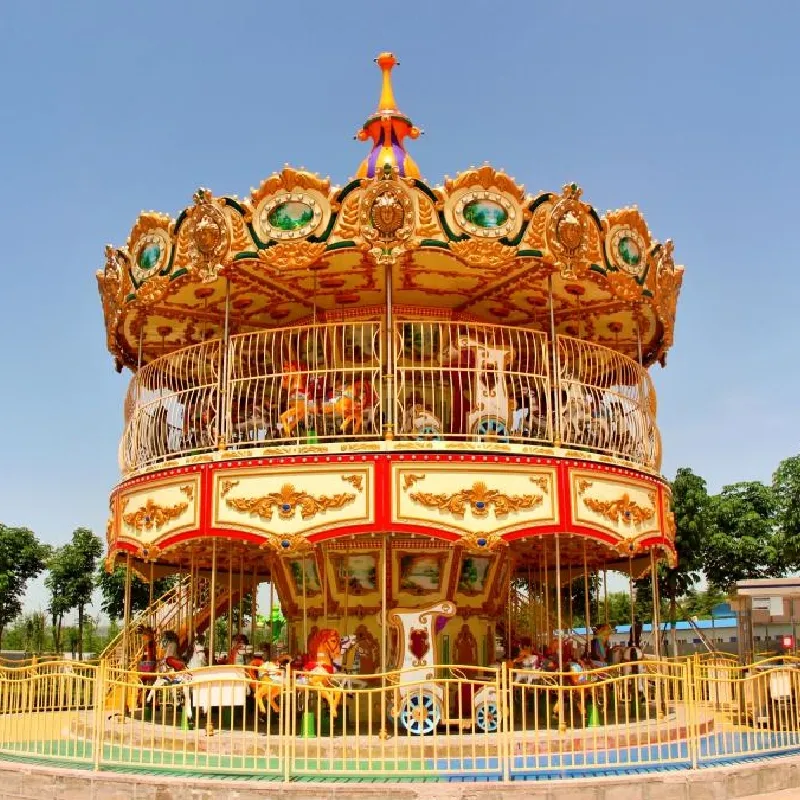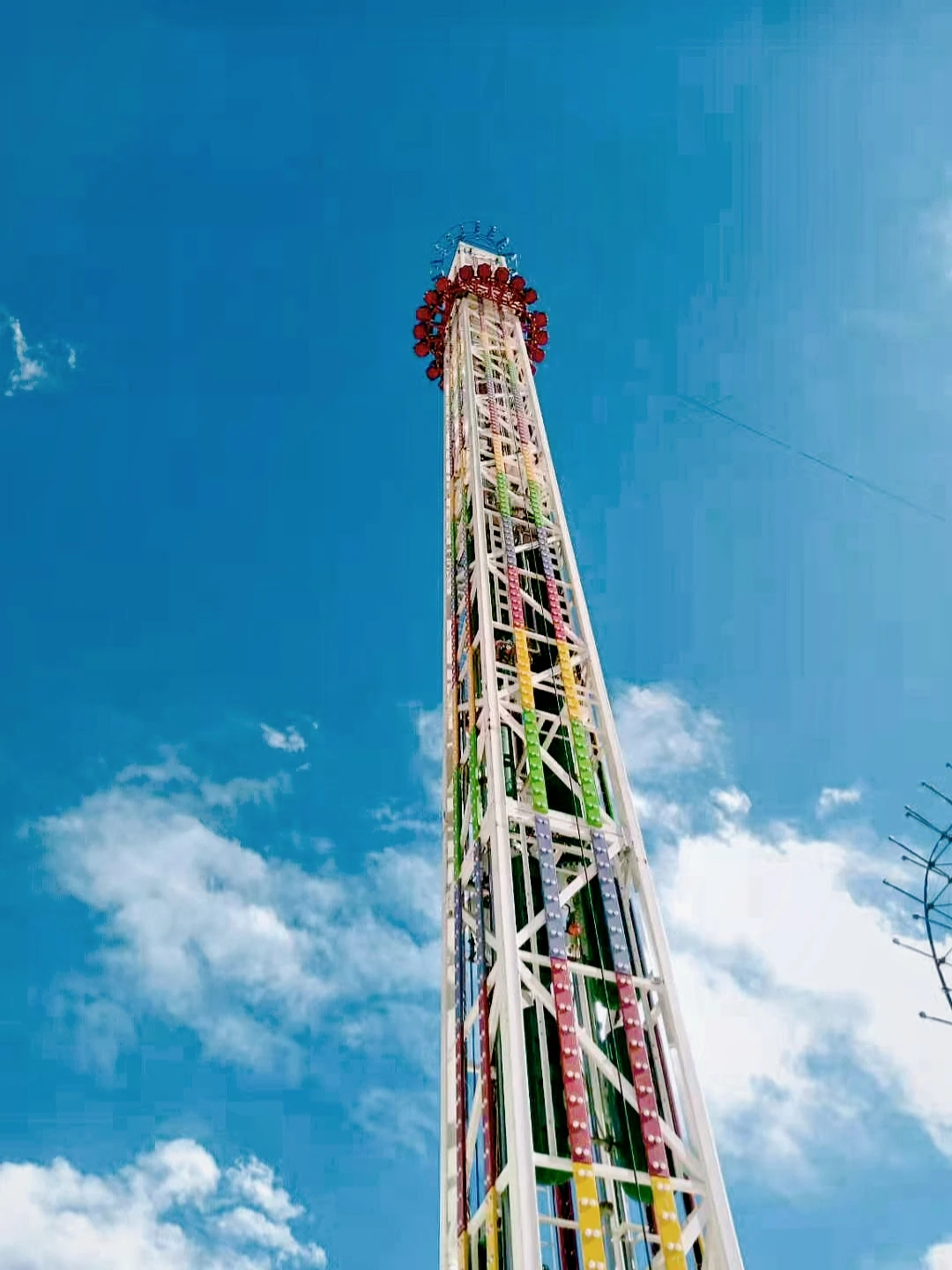2 月 . 18, 2025 10:54
Back to list
W-type Dream Flying Car (Double)
Roller coasters captivate thrill-seekers with their exhilarating designs and heart-stopping drops. However, beyond the adrenaline rush, they embody engineering marvels, meticulously crafted for different ride experiences. For both theme park enthusiasts and industry insiders, understanding various roller coaster types offers insight into their design, operation, and the experiences they deliver.
Dive coasters offer an entirely different kind of thrill, famous for their vertical drops that momentarily suspend riders before releasing them into a thrilling free fall. While they often feature shorter tracks, their appeal lies in the intense, heart-pounding experience. Precision engineering and carefully calibrated brakes are essential to ensure smooth yet thrilling transitions from suspense to plunge. For those craving a blend of coaster styles, hybrid roller coasters combine the best features of wooden and steel designs. By using a wooden foundation with steel tracks, these coasters offer the rugged aesthetic and historic feel of wood with the smooth, thrilling ride of steel. Hybrid coasters are a testament to innovative engineering, providing experiences that appeal to both traditionalists and modern thrill-seekers. Launch coasters eschew the traditional lift hill, instead propelling riders forward from the onset using hydraulic, magnetic, or pneumatic systems. The immediate acceleration is a defining feature, delivering high-speed thrills from the get-go. Launch roller coasters demand precise engineering controls to manage the immense forces and rapid transitions. Finally, family coasters cater to a broader range of ages and thrill tolerance, often featuring gentler speeds and smaller drops. These coasters focus on inclusivity and accessibility, ensuring that an entire family can enjoy the excitement of a roller coaster in a safe and enjoyable manner. Engineering family coasters requires a delicate balance between excitement and safety, tailored to a broad demographic. Understanding these different types of roller coasters goes beyond the surface thrills; it offers a glimpse into the complexities of amusement park design and the meticulous planning that goes into providing fun, safe, and memorable experiences. Each type of coaster brings unique challenges and rewards, from an engineering and experiential standpoint, illustrating the diverse ways humans can manipulate physics to entertain and exhilarate. Whether you are a casual visitor or a coaster aficionado, knowledge of these types offers a deeper appreciation of the multifaceted world of roller coasters.


Dive coasters offer an entirely different kind of thrill, famous for their vertical drops that momentarily suspend riders before releasing them into a thrilling free fall. While they often feature shorter tracks, their appeal lies in the intense, heart-pounding experience. Precision engineering and carefully calibrated brakes are essential to ensure smooth yet thrilling transitions from suspense to plunge. For those craving a blend of coaster styles, hybrid roller coasters combine the best features of wooden and steel designs. By using a wooden foundation with steel tracks, these coasters offer the rugged aesthetic and historic feel of wood with the smooth, thrilling ride of steel. Hybrid coasters are a testament to innovative engineering, providing experiences that appeal to both traditionalists and modern thrill-seekers. Launch coasters eschew the traditional lift hill, instead propelling riders forward from the onset using hydraulic, magnetic, or pneumatic systems. The immediate acceleration is a defining feature, delivering high-speed thrills from the get-go. Launch roller coasters demand precise engineering controls to manage the immense forces and rapid transitions. Finally, family coasters cater to a broader range of ages and thrill tolerance, often featuring gentler speeds and smaller drops. These coasters focus on inclusivity and accessibility, ensuring that an entire family can enjoy the excitement of a roller coaster in a safe and enjoyable manner. Engineering family coasters requires a delicate balance between excitement and safety, tailored to a broad demographic. Understanding these different types of roller coasters goes beyond the surface thrills; it offers a glimpse into the complexities of amusement park design and the meticulous planning that goes into providing fun, safe, and memorable experiences. Each type of coaster brings unique challenges and rewards, from an engineering and experiential standpoint, illustrating the diverse ways humans can manipulate physics to entertain and exhilarate. Whether you are a casual visitor or a coaster aficionado, knowledge of these types offers a deeper appreciation of the multifaceted world of roller coasters.
Latest news
-
Top Amusement Equipment Manufacturer Rock n Roller Coaster & Carousel ManufacturerJun.10,2025
-
World's Scariest Roller Coaster Experience Ultimate Thrill & HeightJun.10,2025
-
Ultimate Thrill Ride Roller Coaster High-Speed, Safe AdventureMay.30,2025
-
Carousel Mansfield Rides Premium Indoor & Event SolutionsMay.30,2025
-
T3 Roller Coaster High-Thrill, Safe Ride for Theme Parks & ResortsMay.30,2025
-
Roller Coaster Cart Design Custom-Built & High-Safety Thrill Ride VehiclesMay.30,2025
